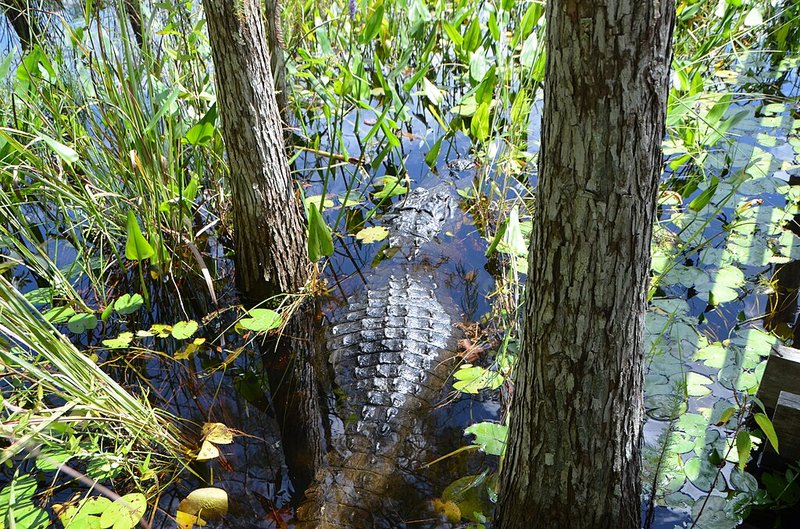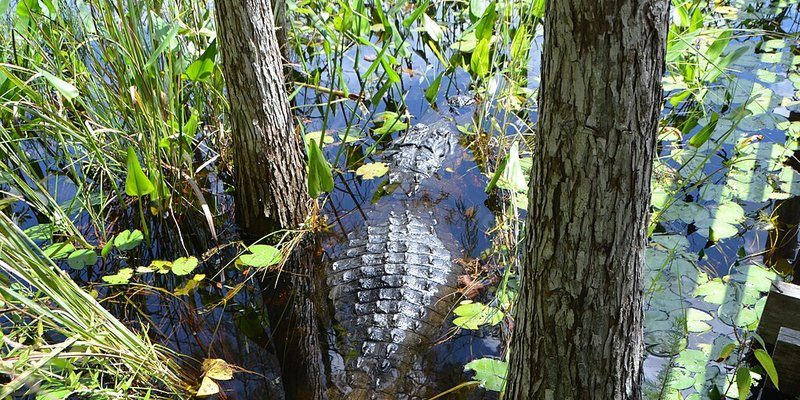
Imagine you’re sitting by a beautiful swamp, watching an alligator glide through the water with grace. But then you remember that these reptiles have had a rocky history due to habitat loss, poaching, and pollution. It’s like watching your favorite café struggling to stay open in a world of fast food. Thankfully, there’s hope. Various conservation efforts are underway to ensure that alligators don’t just survive but thrive in their natural habitats.
Understanding Alligator Populations
To get a clear picture of whether alligators are endangered, it’s important to look at their population trends. The American alligator, for example, was once listed as an endangered species due to overhunting and habitat destruction. However, unlike some endangered species, alligators have shown a remarkable recovery since the 1970s, thanks to strict conservation laws.
You might be wondering how these laws work. With the introduction of regulations like the Endangered Species Act, hunting alligators became heavily restricted, allowing their populations to rebound. Today, alligators are classified as “threatened” rather than endangered, which means they still face challenges but aren’t on the brink of extinction.
In contrast, some other species, like the Chinese alligator, face a much more dire situation with dwindling numbers. It’s crucial to understand the difference as we discuss conservation efforts and what’s being done to help both the American and Chinese alligator species.
Habitat Loss: A Major Threat
Habitat loss is one of the biggest challenges alligators face. As cities expand and farmland grows, wetlands are often drained and altered. This creates a bit of a dilemma for our scaly friends. They need these wetlands not just for food, but also to breed and find shelter. Without a natural habitat, alligators struggle to survive.
The degradation of ecosystems due to pollution is another huge factor. Runoff from agricultural fields and urban areas can harm water quality, making it difficult for alligators to find clean water and food. Picture a restaurant that – due to a bad health inspection – can no longer serve customers; it’s a similar situation for alligators trying to find suitable living conditions.
Conservation groups are stepping up, working to restore wetlands and establish protected areas. This is like creating a safe haven where alligators can live without the fear of losing their territory.
Conservation Success Stories
While the situation can seem bleak, there are some incredible success stories that shine hope on the future of alligators. One major win was the recovery of the American alligator in the late 20th century. Thanks to concerted conservation efforts, their population grew from around 200,000 in the 1960s to over a million today! That’s a significant comeback, don’t you think?
Part of this success can be attributed to community involvement. You’ll find many local organizations rallying around the cause, educating people about the importance of alligators in their ecosystems. They’re like cheerleaders for the wetlands, reminding folks that these reptiles play a vital role in keeping the ecosystem balanced.
Another shining example is the work being done with the Chinese alligator in the Yangtze River. Organizations have teamed up to rehabilitate habitats and raise awareness about this critically endangered species. It’s a tough battle, but with each passing day, these efforts bring hope and positive change.
The Role of Education in Conservation
Education is a crucial tool in the fight for alligator conservation. When people understand the importance of alligators in their ecosystem, they’re more likely to support conservation efforts. It’s like teaching someone the value of recycling – once they know how it impacts the planet, they’re more likely to do it.
Many organizations conduct outreach programs, showing people how to coexist peacefully with alligators. This can be as simple as teaching someone not to feed them, which can lead to dangerous behaviors and conflicts. Imagine if more people realized that respecting wildlife benefits everyone.
School programs and public campaigns have also become key components in raising awareness. These initiatives not only target adults but also engage children, instilling a love for nature early on. After all, today’s kids are tomorrow’s conservationists.
How You Can Help Alligators
Feeling inspired? There are several ways you can contribute to alligator conservation efforts, even from your own home. Here are a few simple yet impactful actions you can take:
- Support Local Conservation Groups: Donations to organizations focused on habitat restoration can make a significant difference.
- Spread Awareness: Share what you learn about alligators and their importance with friends and family.
- Be Responsible Outdoors: When visiting natural areas, follow guidelines to protect wildlife habitats, including not littering.
- Volunteer: Many wildlife organizations have programs you can join to help with conservation efforts directly.
Making small changes can lead to positive impacts, like ripples in a pond. You might not save the world in a day, but every little bit counts towards a brighter future for alligators.
In summary, while alligators have come a long way from being on the brink of extinction, they still face challenges that require ongoing conservation efforts. With habitat loss, pollution, and climate change looming large, we can’t just sit back and relax. Conservation is a team sport, and we all play a role in ensuring these magnificent creatures continue to thrive in the wild.
By understanding the state of alligators today and the efforts being made to protect them, we can foster a sense of responsibility and hope. So the next time you find yourself near a river or swamp, remember the alligator’s quiet strength, and think about what you can do to help keep their world safe and healthy. Together, we can ensure that future generations have the chance to experience the awe of these incredible reptiles.

